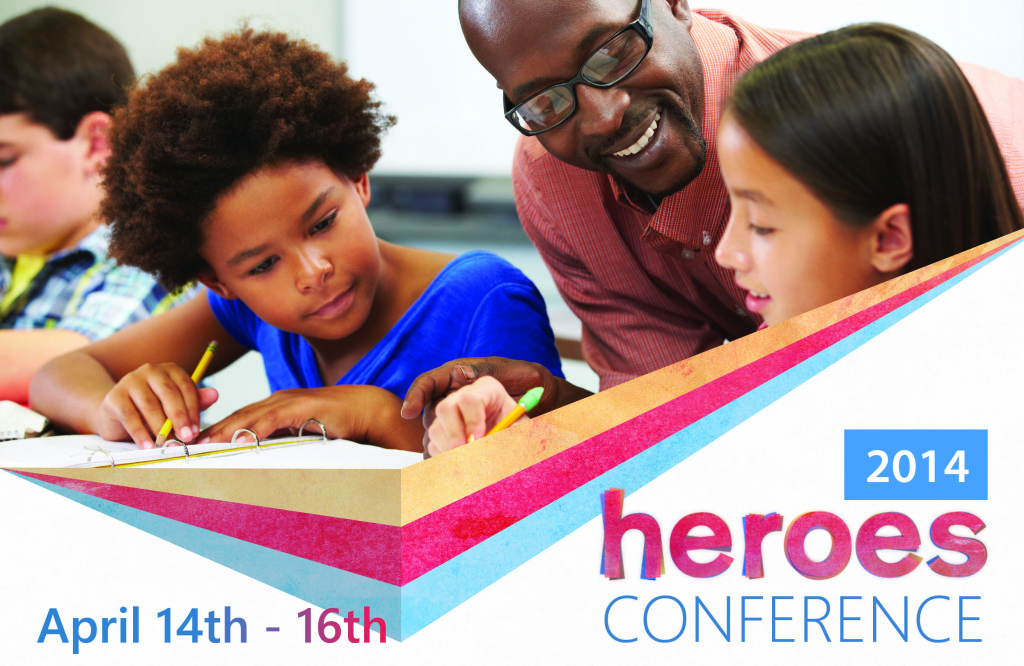On April 14th — 16th the HEROES Model Conference was held at the City College of New York’s Grove School of Engineering. HEROES is an acronym representing six fundamental components to youth development and “reconnection” with society: Heritage; Education; Relationships; Opportunities; Entrepreneurship; and Service.
Chike Ukaegbu designed the HEROES Model. Chike studied Biomedical Engineering at The City College of New York, and is now a Math and Entrepreneurship instructor at the school. He is an alumni Fellow at the Colin Powell Center for Leadership and Policy, where he started his research on youth policy, engagement, and empowerment.
“I developed the HEROES Model framework to address four social problems close
to my heart – youth disconnection, youth poverty, educational disadvantage, and opportunity divide — in order to help improve child and youth development. My sincere hope is that by improving the quality of services rendered to youths, we can increase engagement in order to improve learning,” Chike said
At the Conference Chike told the story of how he first started becoming aware of youth disconnection; walking through the streets of NYC and seeing so much untapped potential in young people. “Disconnection” is used to describe youth who are out of work and out of school. There are now over 6 million disconnected youths in the U.S., between the ages of 16 and 25.
The three NYC neighborhoods with the greatest poverty levels are Upper Manhattan, South Bronx, and Central Brooklyn — not surprisingly, these areas also have the largest concentrations of disconnected youths in the city. When addressing the many causes of disconnection Chike lists lack of education, immigration, unemployment, juvenile delinquency, and early parenthood among other factors.
Each step of the HEROES Model is put in place to reconnect young people. For example, let’s take a look at Heritage. The idea here is that learning about your heritage can be an empowering experience. For at-risk youth who might seek to identify with gangs, a sense of heritage might offer an alternative by encouraging positive self-awareness.
One of the speakers for the Heritage section was Kenneth Braswell, Director of Fathers Incorporated. Fathers Incorporated is a non-profit that promotes responsible fatherhood and mentoring in communities. Braswell spoke about the incredible psychosocial stressors that Black males often experience — the constant accumulation of microagressions from society; a quickly locked car door or sideways glance. “Our community is in pain. Our men are in pain. And they don’t know how to express it, unless in the way that will help them,” Braswell said. “We need to help men create an acceptable language to express anger and pain, and in a way that they don’t feel vulnerable doing so.”
The importance of education was also heavily stressed. Speakers talked about the need for “innovation literacy,” or teaching young people how to be creative and inventive through STEM (Science, Technology, Engineering, and Mathematics) education; teaching youth to understand the language of innovation.
“I believe that the basis of success is learning and that the basis of learning is engagement. Engagement happens when there is interest. What arouses interest includes: benefit/reward, consequence, repetition, and/or connection. This is the next phase of my research, in a nutshell. I call it ‘EduEngageology’(for the lack of a more succinct name), a term coined from ‘Education Engineering’ and the Psychology of Engagement. These will form the pillars on which the HEROES model framework will stand,” Chike said.
Chike’s long-term goal is to revamp how weeducate the youth. He wants to understand the psychology of what engages young people. “By knowing their strengths, motivations, interests, their hopes and their dreams, we are better equipped to engineer how we educate and create opportunities for them,” Chike said.
At first it may seem a little strange that Chike, who has a background in engineering, is getting so involved in youth engagement. Shouldn’t social workers be doing this? Actually, Chike’s story is not uncommon; it’s part of a growing movement in which the skill-sets from engineering and other sciences are applied to solving social problems. Engineering requires the following: identify and clearly define the problem(s); if possible, reducethe problem into more manageable smaller parts and tackle them bit-by-bit; determine the metrics of success; research, investigate, and evaluate solutions; and test solutions and determine if problems were solved — if not, repeat the process. In short, this kind of rigorous problem solving can be usefully applied to social questions.
“Engineering is about artfully applying practical knowledge to solve problem(s). This is the essence of education – enlightenment and problem solving,” Chike said. “My training as an engineer has garnered me tools that allow to me to unearth some significant problems of our educational system through an objective approach. Solving the problem with education will involve understanding the complexity of the problem(s) we face. We tend to try to implement various versions of the same ‘one-size fits all’ solutions to problems that are more stratified and more layered than previously understood, which eventually leads to more damage.”
Still, it’s pretty refreshing to hear an engineer come up with this acronym for Relationships: Respect; Engage; Love; Appreciate; Teach; Inspire; Opportunities; Nurture; Security; Health; Inquire; Patience; and Spirituality. The basic idea here is that young people need a sense of security and trust in their communities to thrive.
Another major theme drawn out in the Conference was Entrepreneurship. “Teaching and coaching youth on how to monetize ideas that interest them will help empower them, while encouraging them to diligently pursue other goals like education,” Chike said.
Surely there is not a single answer as how to best reconnect youth. However, the HEROES Model is off to a good start. In general, HEROES is about empowerment, engagement, and possibility. It also expresses the deep interconnectivity of communities — the fact that for young people to reconnect, society must do the same.

